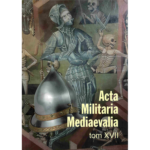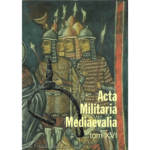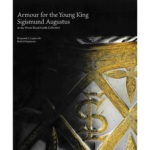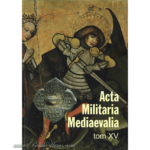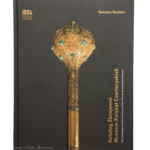
PDF – Studies On Late Mediaeval Weaponry
 |
‘THE STATE OF STUDIES ON LATE MEDIAEVAL WEAPONRY IN MALOPOLSKA (LESSER POLAND)‘
by MARCIN GLINIANOWICZ |
This is the article from the 1st volume of the archaelogical magazine Acta Militaria Medievalia, published a few years ago. All copies of the book were sold quite fast, so the publisher (Museum of Sanok and Polish Academy of Science), decided to put PDF version of the magazine on the web.
Below you’ll find the file for download with the article (PDF file compressed with rar). The file includes copyable text, you can later put into the translator on this site. Below you can read English summary of the paper.
 |
(0,8 MB) |
SUMMARY
The area of Małopolska is abundant in all kinds of late mediaeval military finds. Researchers come across them during excavations on the sites of mediaeval towns and fortified seats (strongholds and castles), accidental finds are even more numerous, in the vicinity of rivers, mainly. The late mediaeval defensive weaponry items include: a basinet from Sandomierz, a fragment of a cover plate of a sallet-type helmet, and remnants of „gothic” armour from Spytkowice, a fragment of a great helm, and a fragment of a bevor from Smoleń, fragments of „hourglass” gauntlet from Czchów, as well as 28 probable plate pieces for the defence of the body. The offensive weaponry in the area in question is represented by: 34 swords (including 24 with confirmed locations of finds), 1 falchion, 2 hauswehrs, 4 battle knives, 2 daggers, 4 battle-axes, 53 axes, and 1 lance head. Most of the swords represent type XVIa and XVII according to Oakeshott, i.e. they are fitted with allpurpose blades and used to aim strokes and to push. The most numerous group of axes is type IX according to Głosek. In the case of axes, however, we cannot be certain which types were made for the purely military purposes and which as working tools. Spearheads and javelin heads changed little over the centuries; therefore it is difficult to list the items which could be unreservedly referred to as late mediaeval. Arrowheads are very scarce on late mediaeval sites, in sharp contrast to bolt heads, a few hundreds of which are known in Małopolska, which is evidence of a great popularity of the crossbow in the area in question. Almost all defensive weaponry items were discovered during regular excavation works on late mediaeval sites, similarly to arrowheads and bolt heads, whilst a straight majority of swords and axes from Małopolska are accidental finds, discovered near rivers. The issue of late medieval weaponry requires further intensive studies as this branch of science continues to have substantial deficiencies.
Translated by Ireneusz Paternoga
